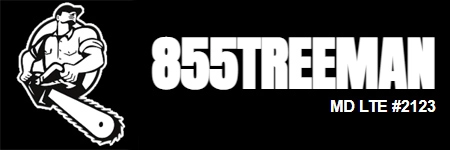Many shade trees are susceptible to fatal diseases like Bacterial Leaf Scorch. This guide looks at some options you have for treating this plant disease.
Do your trees look like they have scorched edges, even though the tree seems healthy and it’s too early in the season for browned leaves?
If so, your tree may have a case of bacterial leaf scorch. And while this disease isn’t necessarily fatal, it can kill your tree if it’s allowed to progress too long.
Here’s a quick overview of this tree disease and how you can protect your trees from infection.
What is the Threat?
There are several different types of leaf scorch. Regular leaf scorch is a physiological, non-infections condition brought on by unfavorable growing conditions. Bacterial leaf scorch, on the other hand, is a systemic plant disease caused by Xylella fastidiosa. The bacteria earned its name because it infects the xylem (water and nutrient-conducting systems) of susceptible trees.
Typically, bacterial leaf scorch spreads through two ways: xylem-feeding bugs (such as treehoppers, leafhoppers, and spittlebugs) and root grafts.
Once the bacteria gets inside the tree’s vascular system, it blocks water movement from the roots.
Where is the Threat?
Bacterial leaf scorch is found throughout much of the eastern and southern U.S. This is likely because the bacteria favor wet or humid growing conditions.
In Maryland, the disease is typically found in shade trees, including:
- Elm
- Hackberry
- Mulberry
- Oak
- Maple
- Gingko
- Sycamore
- Sweetgum
- Catalpa
It is especially common in oak trees, particularly pin oak and red oak varieties. It should not be confused with non-infectious leaf scorch, which tends to occur when plant roots cannot provide enough water to make up for lost water due to dry soil, dry wind, and high temperatures. The initial plant damage may appear similar, but a discerning eye can spot the difference.
Symptoms
Once a tree gets bacterial leaf scorch, it will get symptoms repeatedly over several years as the disease slowly spreads from the roots to the crown of the tree.
The first sign is premature leaf browning in mid-summer, followed by necrosis in the leaf margin which spreads toward the veins in an irregular pattern. In most leaves, browned tissue is separated from healthy green tissue by a yellow border.
Symptoms first appear in the oldest leaves (toward the bottom of the tree) and progress slowly upward toward younger growth. An infected leaf may or may not fall off. The tree leafs out normally at the start of the season, but scorch reappears as premature browning which spreads to a few more branches than the previous year.
What to Do About It
Bacterial leaf scorch treatment can be performed by a professional arborist.
Your best bet is a two-part trunk injection to drive off any bugs, along with a bactericide to attack the infection. The latter should be repeated every 120 days to bolster the tree’s resilience. You should also incorporate a moisture manager in the root zone to keep the tree from re-developing an infection.
Aside from treating the tree itself, your best bet is to get aggressive about pests in your trees, as these can easily spread infection.
Turn to an Expert for Bacterial Leaf Scorch
If your trees are suffering from bacterial leaf scorch, it’s time to call a pro to get the problem in hand. That’s where we come in. We provide expert tree services with the most five-star reviews of any tree service in southern Maryland.
So if you need to rein in a case of bacterial leaf scorch, get in touch today to schedule your free on-site estimate.

